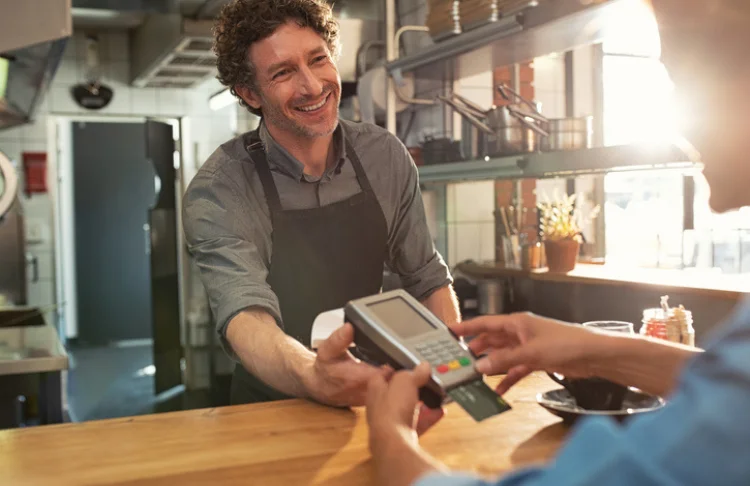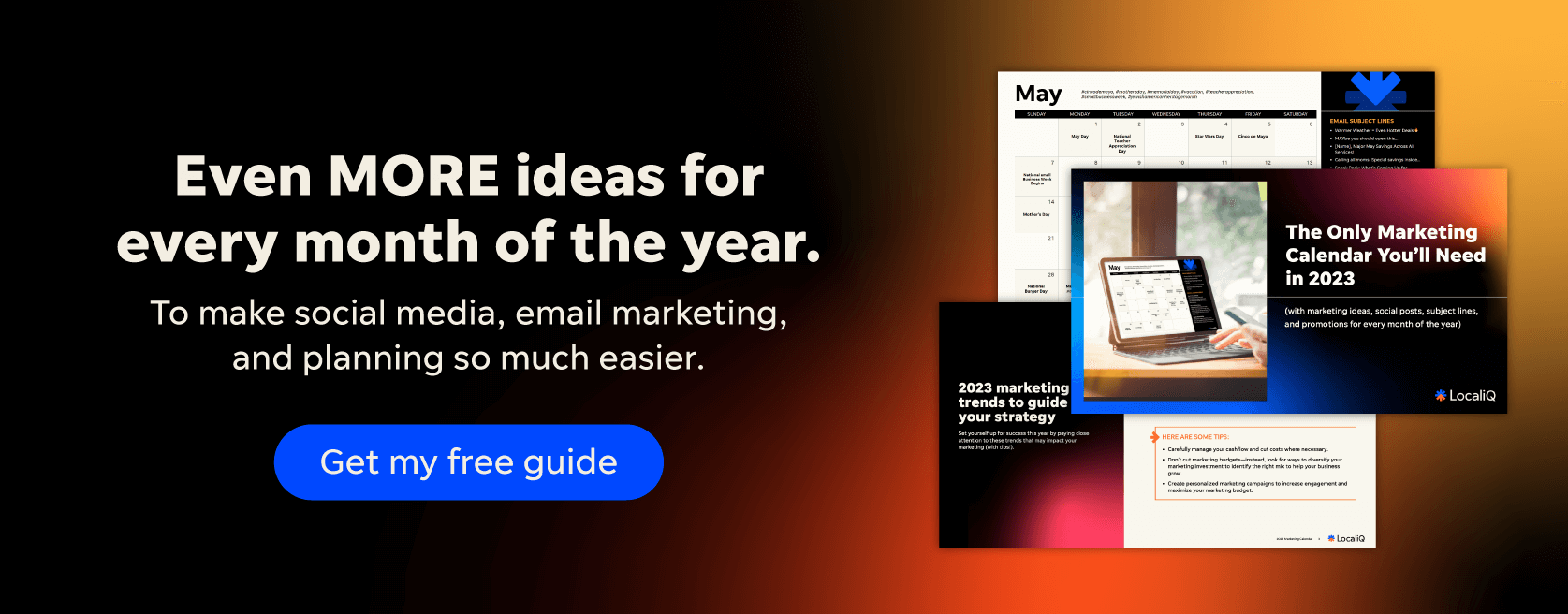Technology is constantly evolving. If you’re marketing a brand in today’s digital world, your strategies will always be shifting to take advantage of new technological advances and to meet fresh consumer demands.
In some cases, even approaches that were effective 12 short months ago are now passé. Here, I’ll walk you through the latest and greatest in the world of marketing trends so that you can be sure your business is well-positioned to succeed in 2020.
And, make sure to scroll all the way to the bottom to check out our infographic featuring what top marketing experts think you should keep in mind this year.
Mobile Domination Continues
There’s been a major shift away from desktop and towards mobile devices in recent years. In 2019, 63% of all Google searches began on a mobile device, and 40% of all online transactions occurred on mobile.
If you haven’t yet built an online presence that’s optimized for mobile, 2020 is the year to do so. This starts with a mobile-friendly website — one with responsive design that’s fast to load on mobile devices.
But it goes beyond just your website. You also need a mobile-friendly presence across the web. Making sure that you’re on all of the major social sites allows you to greet consumers who are checking their social accounts multiple times per day via the apps on their phone.
You also want to manage your business on the major local listings sites, like Yelp, Google My Business, and Facebook. This allows you to be found by consumers looking for solutions beyond the bounds of a traditional internet browser search. If they’re looking for a local business via the Yelp app, they will only find your business if you’re listed on Yelp!
Content Goes Beyond the Blog
For many years, the words “content” and “blog” were used synonymously. However, in the past few years, business owners and marketers have expanded their content marketing horizons to include video and audio, and consumers have embraced these new forms of content with open arms. Fifty-four percent of consumers said they’d like to see more video content from brands they follow, and podcasts saw a huge spike in listenership in 2019 (nearly one in three Americans now listens to a podcast at least once a month).
The trend towards mobile is driving a lot of this shift away from blogging and written content and towards audio and visual content. Today’s consumers are on-the-go and have shorter attention spans. While they might not carve out the time to sit on the couch and read a thousand-word blog post from your business, they will likely engage with a two-minute video or put on your 20-minute podcast episode during their morning commute.
Personalization Reigns
Personalization is another marketing trend we’ve seen gain major traction over the past few years. From email to website content to paid ads, personalization gets incredible results across all marketing channels. If you need further confirmation, check out this lengthy list of impressive statistics to see the results of personalization here, there, and everywhere! Personalization was also a big hit with the experts we talked to for our infographic below.
Effective personalization begins with strong audience segmentation. You can only send targeted messages to your audience if you know who the different subsets of your audience are! Start by studying your existing customers to understand their traits, behaviors, and actions.
From there, you can build a sketch of the handful of types of consumers who do business with you. Armed with this information, you can break your list down by these personas and send each type of consumer messaging that speaks to their unique needs. This not only helps you to better communicate with existing customers but also helps you entice prospects with more targeted messaging that’s more likely to lead to conversion.
Paid Search Takes Up More Space
Paid search marketing has changed a lot in the past few years. Back in the day, paid search results were text-only and took up the first few spots at the top of search engine results pages (SERPs). Now, brands have the option to run all sorts of paid ads — from text-based ads to photos to videos to Maps results.
With so many types of paid search, Google has handed over more space on the SERPs to paid results. In some cases, the top third of a Google results page is all paid content. That means that even the most effective SEO strategies are being crowded out by paid results.
If you’ve been telling yourself that smart SEO is all you need for your brand, I’m here to disabuse you of that notion! This is the year to create a strategy that blends SEO and paid tactics to help you generate the greatest reach.
AI Automation & Machine Learning Help You Market Smarter
Artificial intelligence is changing just about every facet of business, and marketing is no exception. And while there will always be a place for a human touch in certain aspects of marketing, AI is making some of the behind-the-scenes marketing work easier and more efficient.
For example, LOCALiQ Search Marketing uses machine learning to allocate your budget based on what’s driving leads, not just clicks, on your ads. This automatically optimizes your campaigns to drive the best results for your business.
Marketing automation also plays a role in smart email marketing. By establishing automated email campaigns triggered by certain behaviors or actions, you can reach customers just when you need to, without having to do the manual work.
For example, you can establish a campaign that’s set to trigger when someone abandons a cart on your website. By sending a follow-up email to someone who left products in their e-cart without purchasing, you can greatly reduce cart abandonment. And by automating the process, you make sure the email gets sent to each person who abandons their cart, without placing an additional burden on your team to manually track consumers’ behaviors.
Voice Search Expands Further
The use of smart speakers has exploded over the past few years. With more than 21 million smart speakers expected to be in use in the U.S. this year, and experts anticipating 30% of searches will be initiated without a screen, claiming your space in the world of voice search sooner rather than later is important.
In order to dominate in voice search, you need to rethink some of your approaches to SEO. Unlike with on-screen search results, voice searches are only given one at a time. If you don’t appear at the top of SERPs, searchers will likely overlook you. Most voice assistants aren’t going to page two of SERPs to pull answers to queries.
Starting with a mobile-friendly site is key. Search engines now determine which sites to display in results based on their mobile-friendliness, so building a responsive site is one of the simplest things you can do to position yourself to perform well in SEO.
Using natural language is another way to stand out in voice search. And don’t forget to manage your business on local listings, which can position you well in voice search, as voice assistants often pull answers from map results and sites like Yelp.
Augmented Reality Changes How Prospects Try Products
Until very recently, it used to be that if you wanted to try a product before you purchased it, you had to go into a brick-and-mortar store to see it in person. For consumers considering big-ticket items, it’s often really important to try something out before they commit to buying. In the past, if those prospects were far away from your physical store, you simply missed out on the opportunity to have them try your product (and therefore likely missed out on the sale).
Now, though, brands are discovering a solution to this hurdle in the form of augmented reality (AR). The technology allows your prospects to try your products no matter where they are.
Take a look at what Gucci has done with its AR-based app. By pointing their phones at their feet, consumers can see what a pair of Gucci shoes would look like on their feet. This is more than just a fun technology trick; allowing consumers to try virtually before they buy can help close the sale.
We’ll See a Rise in Micro-Influencers
Influencer marketing has grown exponentially in the decade since Instagram launched. But, as something that was once seen as a marketing tactic reserved for large brands, we’ve started to see local businesses get into the influencer marketing game by partnering with micro-influencers. Micro-influencers are individuals who have a smaller following than your average celebrity (think: between 1,000 and 800k) and are considered experts in a specific niche. These could be “mommy-bloggers” who mainly talk about issues that pertain to their specific group or local foodies who cover the restaurant scene in your area.
Consumers enjoy engaging with influencers and micro-influencers because they see them as real and authentic. We cover influencer marketing in depth for you here, but it’s important to keep in mind identifying micro-influencers that align with your company values and story in order to continue engaging with your audience authentically on social media.
Jockeying for Position Zero Becomes a Focus
Position zero sounds like it could be the title of a sci-fi movie. But in reality, it’s one of the top marketing trends you need to be aware of for 2020.
Rand Fishkin of SparkToro wrote recently about how Google clickthrough rates are on the decline. In 2018, 60% of all Google searches from mobile devices resulted in no clicks. Why are people searching but not clicking?
Because Google is now placing answers to searchers’ questions right on their site in the form of featured snippets. Having your content featured in a snippet is also known as securing position zero, and brands are hoping to land there.
Featured snippets pull information directly from a website and place that content in a highlighted box on the SERPs page itself. When users can find the answers to their queries in these featured snippets, they often don’t click through to the site itself. Making sure that your content is pulled for the featured snippet, so that your name is associated with the winning answer to a user’s question, is important.
Not only that, but voice search results are often pulled from featured snippets. This is yet another reason to aim to take that coveted position on SERPs.
How do you get there? Start by taking a look at your existing content. Anything that’s already ranking on that first page of SERPs is in a good position to be optimized to become a featured snippet result.
From there, focus on question-centric keywords. Snippets often answer questions, and so formatting your content to answer questions like “How do I” can help you to land in that featured snippet spot.
Chat Gains Importance
Another top marketing trend for 2020 is meeting customers where they are. Today’s consumers are on the go and want to be able to reach a brand on their terms. Chat allows consumers to reach out to brands wherever and whenever, without the hassle of having to wait for an email response or sit on hold waiting for a customer representative to take their call.
But this ability to reach a brand immediately means they also expect resolutions quickly. Thirty-nine percent of consumers complaining to a brand via social media expect a response within one hour!
For smaller businesses that don’t have a customer service army to handle issues, this can be a near-impossible task. That’s why chatbots can be a welcome addition to your customer service toolbox.
Chatbots can quickly resolve customers’ simpler issues, which in turn frees your human team up to deal with more complex issues. That way, all of your customers walk away feeling happy and well-cared-for.
Live chat is also a huge asset for B2B businesses looking for ways to capture more leads, interact with prospective customers at any point in their buying journey, and much more.
SMS Marketing
The cousin of chatbot technology is SMS marketing. It has the benefit of the immediacy of chat, but it’s also a marketing channel that gets super high rates of engagement. Eighty-three percent of Millennials open SMS messages, and SMS response rates are eight times higher than those of email.
Some businesses are hesitant to embrace SMS marketing because they’re worried that consumers don’t want to be texted by brands. In reality, the exact opposite is true. Seventy-five percent of consumers say they’re happy to receive texts from a brand, once they’ve opted into that type of communication.
The other benefit to SMS marketing is that not many brands have caught onto its effectiveness yet. Right now, only 30% of customers receive texts from brands they already do business with. This means there’s a huge opportunity for you to claim a lot of territory in the SMS marketing space before your competitors even show up!
Digital marketing continues to experience major shifts as technology and consumer expectations change. It’s not enough to take a set-it-and-forget-it approach to your marketing. You need to stay agile and shift your strategy to respond to the latest trends in order to track toward an effective marketing strategy. If you’re looking for help staying ahead of the top marketing trends in 2020, we should talk.

Related Articles
-

The 12 Most Effective Home Services Promotion Ideas
-

9 Bold Brand Awareness Campaign Examples (+Tips for Yours)
-

40 Best Real Estate Call-to-Action Phrases to Convert Buyers, Renters, or Sellers
-

17 Tried & True Promotion Ideas to Boost Sales
-

94 Spring Marketing Slogans & Examples for Refreshing Results


